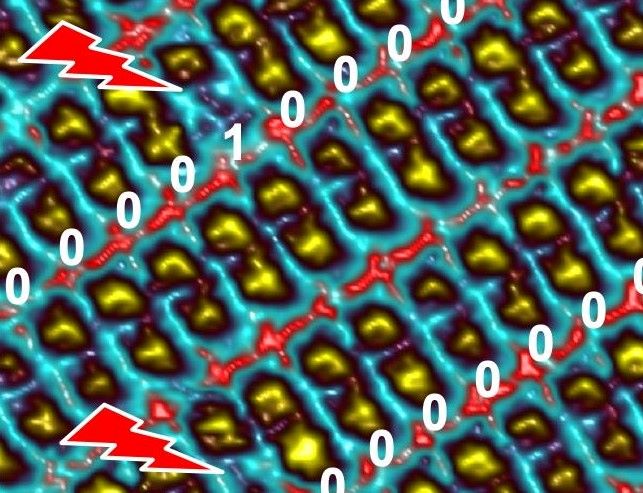
The international team of scientists behind the breakthrough believe that molecules like the ones they have discovered could offer information density of around 250 terabits per square inch.
Semiconducting metal nanocluster breakthrough paves the way for next generation electronics
In the study, molecules of an organic salt can be switched using a small electrical input to appear either bright or dark, which provides binary information. This this information can be written, read and erased at room temperature and in normal air pressures. Most previous research into molecular electronics for similar applications has been conducted in vacuum and at very low temperatures.
In a statement, Dr Stijn Mertens, Senior Lecturer in Electrochemical Surface Science at Lancaster University and lead researcher on the study, said: "There is an entire list of properties that a molecule has to possess to be useful as a molecular memory. Apart from being switchable in both directions under ambient conditions, it has to be stable for a long time in the bright and dark state, and also spontaneously form highly ordered layers that are only one molecule thick, in a process called self-assembly. Ours is the first example that combines all these features in the same molecule."
In laboratory experiments, the research team used small electric pulses in a scanning tunnelling microscope to switch individual molecules from bright to dark.
During the switching, the electric pulse changes the way the cation and the anion in the organic salt are stacked together, and this stacking causes the molecule to appear either bright or dark. According to Lancaster University, the spontaneous ordering of the molecules is crucial: through self-assembly, they find their way into a highly ordered structure - a two-dimensional crystal - without the need for expensive manufacturing tools currently used for electronics.
"Because chemistry allows us to make molecules with sophisticated functions in enormous numbers and with atomic precision, molecular electronics may have a very bright future," Dr Mertens said.
The researchers do not expect their molecules to be used in real hard drives, but say the study is an important proof of concept that brings molecular electronics closer to realisation.
The research is detailed in the paper 'Ambient bistable single dipole switching in a molecular monolayer', which has been published in Angewandte Chemie.





Swiss geoengineering start-up targets methane removal
No mention whatsoever about the effect of increased methane levels/iron chloride in the ocean on the pH and chemical properties of the ocean - are we...